The MonkeyBird duo
Trained at the Bordeaux School of Applied Arts, the MonkeyBird artist duo of Edouard Egea and Louis Boidron, now based in Avon, draw their inspiration from architectural motifs, sculptures and prints, to create complex wefts punctuated with symbols that speak of man and his history. Their preferred technique, stencilling, enables them to repeat a motif with great finesse of detail. The result is a sophisticated aesthetic that is an invitation to contemplation and reflection. With their fetish animals, the monkey and the bird, the duo explore the hidden side of our humanity: man, a social animal, is symbolized in all his existential duality, driven by instinct and motivated by conscience. For the palisade at the Château de Fontainebleau, MonkeyBird drew on a vast iconographic repertoire, including Antoine-Laurent Castellan’s Etudes pittoresques et historiques sur Fontainebleau (1840), Georges-François-Antoine Robit’s engraved albums (1812) and Rodolphe Pfnor’s (1866), as well as the sales catalog for Rosa Bonheur’s painted work (Galerie Georges Petit, 1905). Their totem animals, the monkey and the bird, were inspired by the Triomphe de Mars tapestry after Jules Romain (1499-1546) and the Concerts d’oiseaux by Frans Snyders (1579-1657).
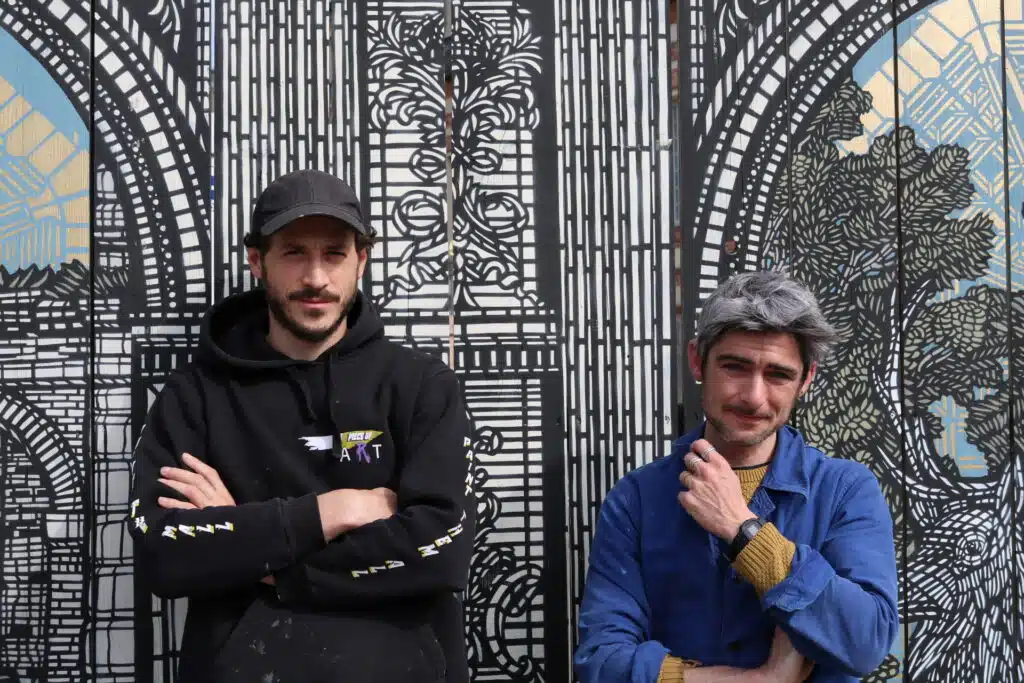
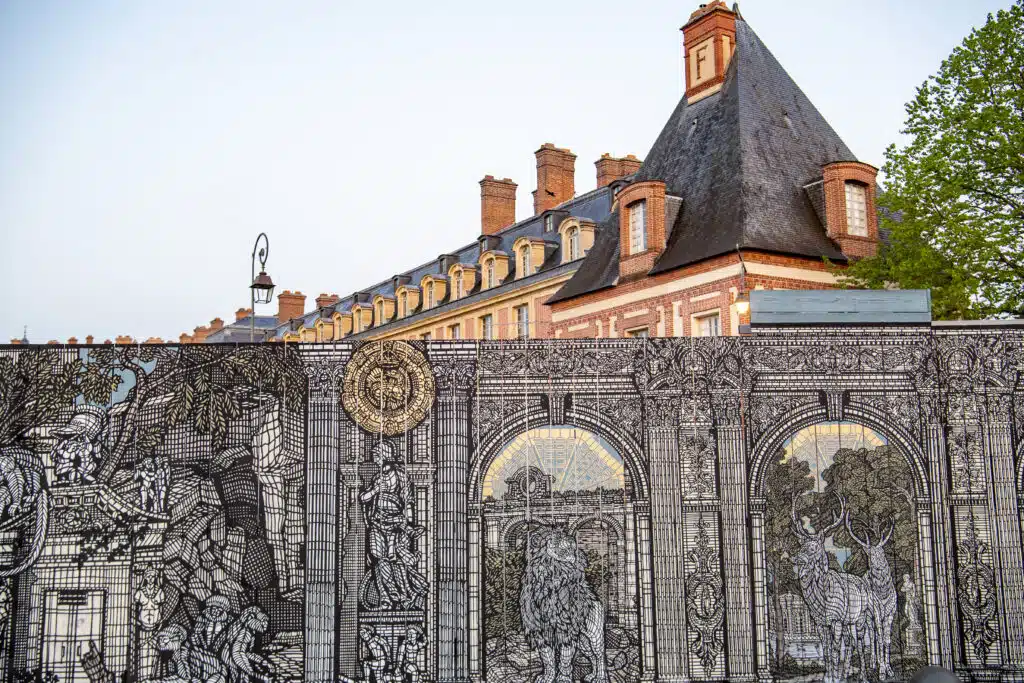
An artistic creation inspired by the château
This several-metre-long work celebrates wildlife, architecture and nature. Alternating picturesque landscapes and palatial settings, rustic exteriors and precious interiors, the MonkeyBird duo of artists Edouard Egea and Louis Boidron pay tribute to the Fontainebleau estate in all its diversity. To do so, they have drawn on the work of the artists who built, decorated or simply observed it. Starting with the landscape painter Antoine-Laurent Castellan (1772-1838), whose engraved work serves as the backdrop for his composition. Starting with his romantic drawings, in which archaeological concern is tinged with nostalgia, the duo punctuate the reading of their frieze with the richly ornamented arcades of the Chapelle de la Trinité, enriched by the Mannerist painter Martin Fréminet (1567-1619). Each bay is a pretext for new views of Rosa Bonheur’s (1822-1899) familiar animals frolicking about. Bringing together several emblematic figures from the Bellifontaine art scene through the ages, MonkeyBird creates a harmonious universe thanks to a graphic style that unites each element through the chiseling of its stencils. Using a sober palette dominated by black and white, he revives the technique of burin engraving. From afar, the presence of dark green refers to the Empire as much as to the foliage, while gold highlights trace the filigree of planes, voussures and architectural fixtures.
In this new Eden, where nature and culture go hand in hand, the landscape is sometimes wild and forested, sometimes tamed and gardened. Man’s artifice mingles with the eclectic bestiary it hosts. Pavilions, fountains and other buildings bear witness to his presence in an attempt to commune with the place. Whether in ruins or in all its magnificence, the architecture here takes the form of a spatio-temporal shortcut, in which the vestiges and even the reminiscences of vanished buildings compete with the durability of the royal residence. Thus, on either side, the Egyptian Gate lost among the rocks responds to the classical facade of the château seen from its pond, while the Belle Eau fountain dialogues with the ruins of the kennel or the Cormier well. Through these imaginary confrontations, in the spirit of the “architectural caprices” inherited from the 18th century, the artists invite us to appreciate the symbiosis of art and nature as they unfold, renewing the grammar of panoramic settings and redefining their protagonists. At the center of the fresco, framed by the door of the Baptistery and watched over by two hermaphroditic pillars, is the forest – the origin of the Fontainebleau estate – not the main protagonist here?
Interview with the Monkeybird duo
Comment MonkeyBird est né ?
Edouard : On a créé MonkeyBird à Bordeaux pendant nos études d’arts appliqués, on s’est rencontrés dans notre année de mise à niveau. On a commencé à travailler ensemble le weekend et le soir. On travaillait chacun de notre côté pour les cours et puis on a commencé à travailler ensemble, plus précisément dans le domaine de la rue. On avait chacun notre univers graphique alors on a commencé à réunir nos styles pour créer un univers commun qui a émergé en 2009. On travaille sur la nature, sur le domaine du bestiaire.
Louis : Les oiseaux et les singes, dès le début c’était vraiment notre identité, d’où le nom MonkeyBird.
Edouard : En fait on s’est choisi un animal totem. Au lieu de choisir un nom de graffeur, on a voulu contrer un peu ce truc là et se dire « on va plutôt choisir un animal qui nous est propre, pour lequel on a de l’affection » et puis on a choisi ça, et voilà, ça a commencé comme ça, assez naturellement.
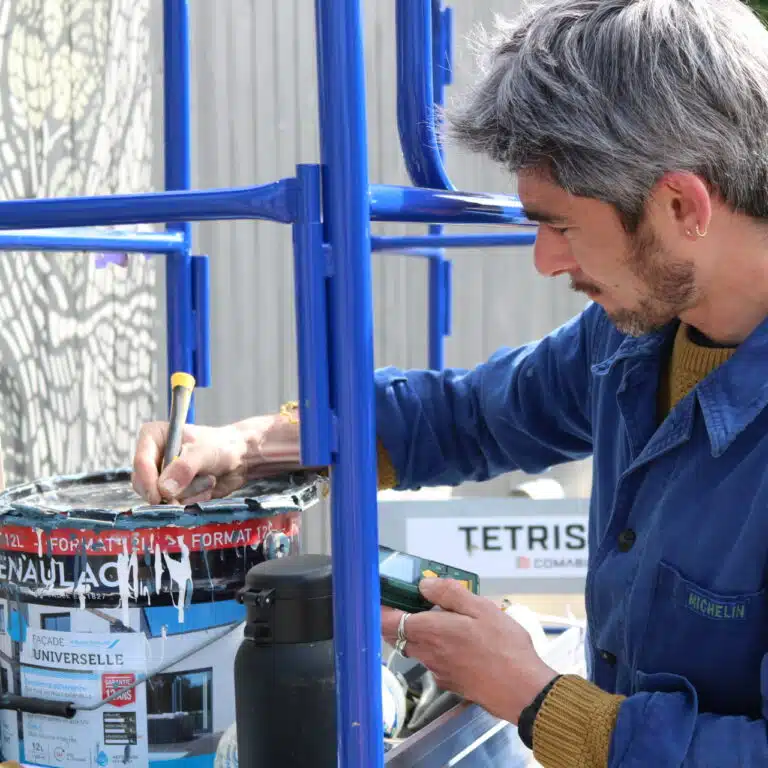
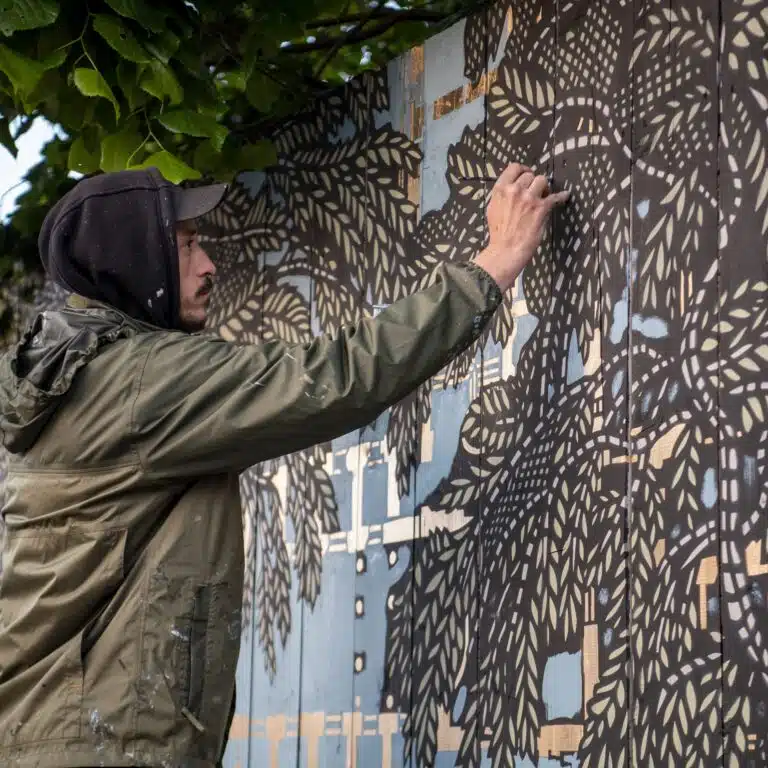
Quelle a été votre source d’inspiration pour cette création sur la palissade ?
Edouard : L’idée de faire une palissade ici, au château de Fontainebleau, c’était vraiment de se nourrir de la richesse historique et culturelle qu’il y a dans le château, de par ses archives, de par ses documents techniques tels que les documents d’architecture, les livres de détails d’ornementations des salles, etc. L’idée c’était vraiment de puiser dans toutes ces références, dans tout ce foisonnement d’histoire et de culture regroupé ici et d’en faire quelque chose d’unique. Emmener le spectateur dans notre univers mais à la fois avec des clins d’œil plus que poussés au château, à l’histoire du château. Si les gens prennent le temps, il y a vraiment la possibilité de retrouver des éléments à la fois sur la fresque et à la fois à l’intérieur du château. C’était vraiment ce jeu-là, réinterpréter de manière contemporaine, l’idée de la commande.
Est-ce parmi la fresque il y a une partie que vous avez préféré réaliser ou au contraire une qui a été plus compliquée ?
Edouard : On l’a approché en globalité et c’est vrai que on a souvent des grosses commandes de grandes fresques, donc ce genre de format c’est pour nous assez évident en terme de travail. On l’aborde avec passion et envie. Ça se fait bien, on est content parce qu’on on travaille bien, on a plutôt un bon rythme ici. Ça se passe plutôt bien.
Louis : C’est vraiment pratique de travailler ici parce qu’il y a l’atelier juste à côté, à Avon. Ça nous fait vraiment plaisir de travailler dans cet environnement car c’est un endroit inspirant : comme Edouard l’a dit, il y a l’architecture du château, mais on a aussi voulu mettre en avant la nature, qui nous inspire aussi beaucoup. Les jardins, les paysages, les animaux qu’on retrouve sont des animaux qui ont été par exemple dans le parc comme les paons, ou les lions qui étaient chez Rosa Bonheur. C’est parler aussi de toute cette histoire naturelle de la région.
Edouard : C’est parler à la fois du patrimoine de la région et du château car c’est un ensemble, un tout commun.
Louis : C’est d’ailleurs pour ça que l’on a appelé la fresque « La mémoire des pierres ». C’est à la fois la mémoire des pierres du château et des pierres de la forêt.
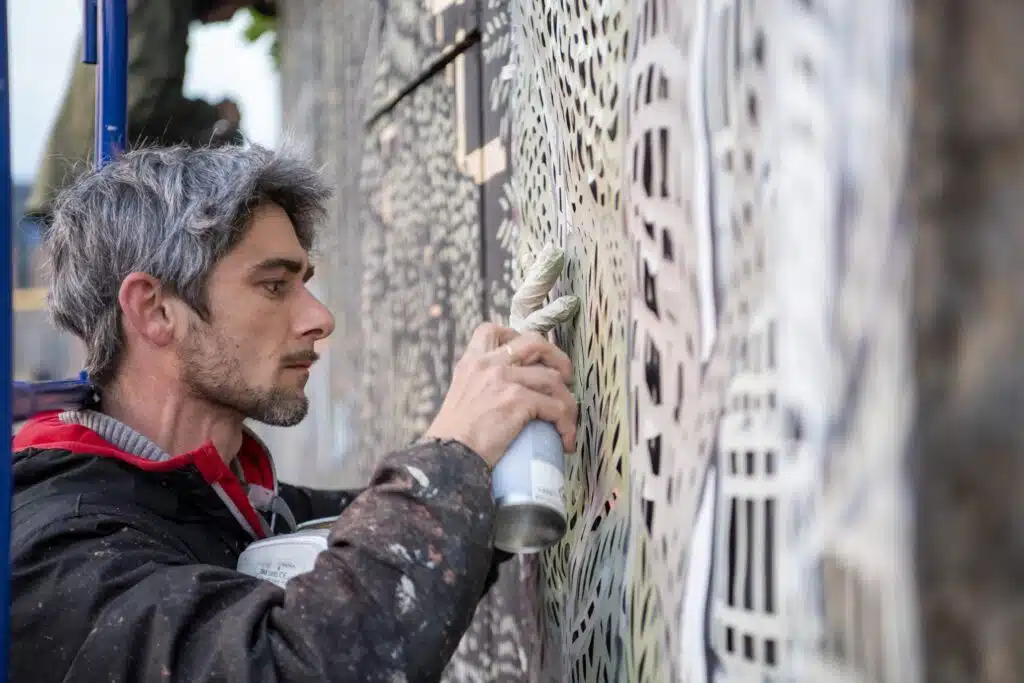
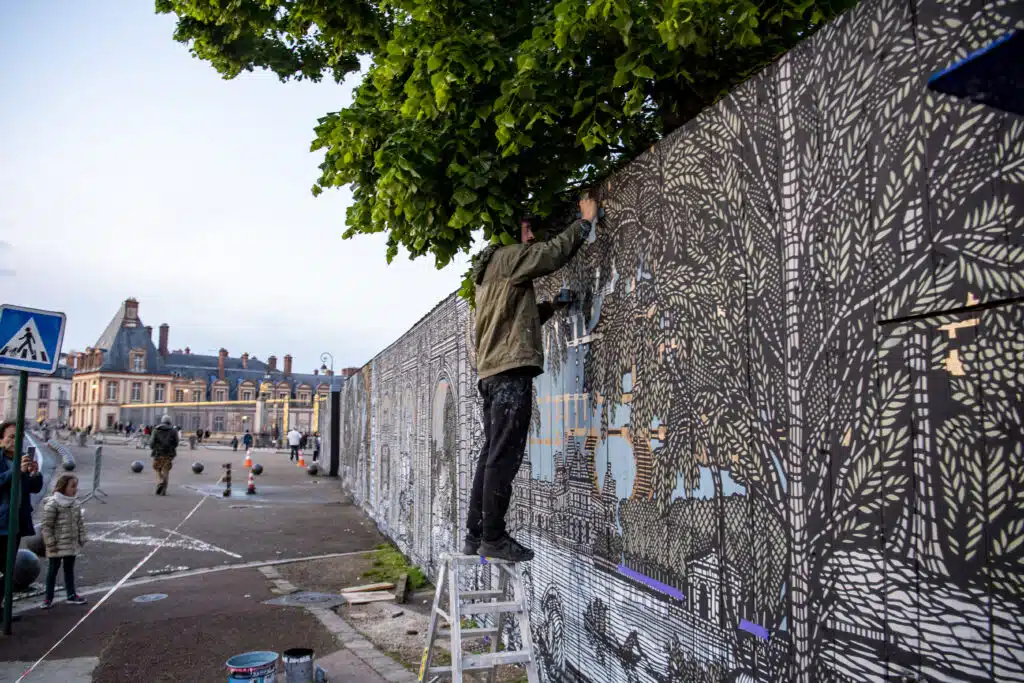
This event, curated by Cyrille Gouyette, benefits from the exceptional support of the Département de Seine-et-Marne as part of its “Incroyables jardins! Emotions and discoveries throughout the seasons” season, as well as the patronage of HB et associés Avocats.
This creation by MonkeyBird for the Château de Fontainebleau is presented as part of the Grandeur Nature exhibition. 18 artists in the garden, to be discovered in the English Garden, until September 17, 2023.